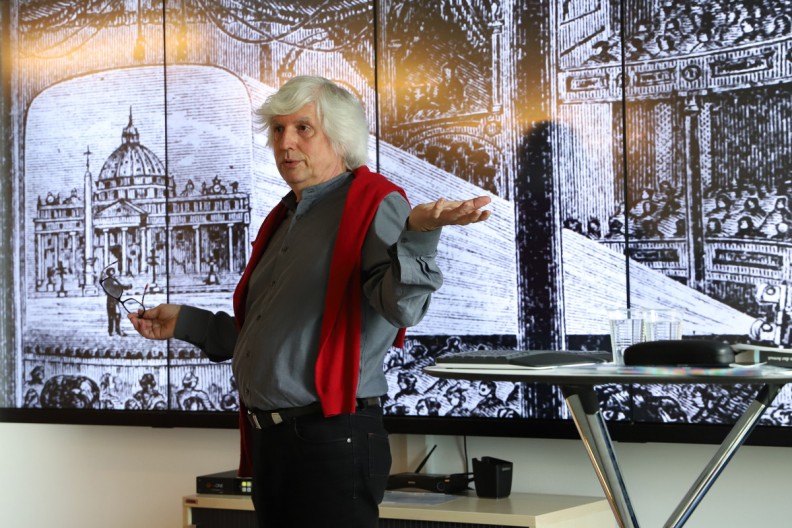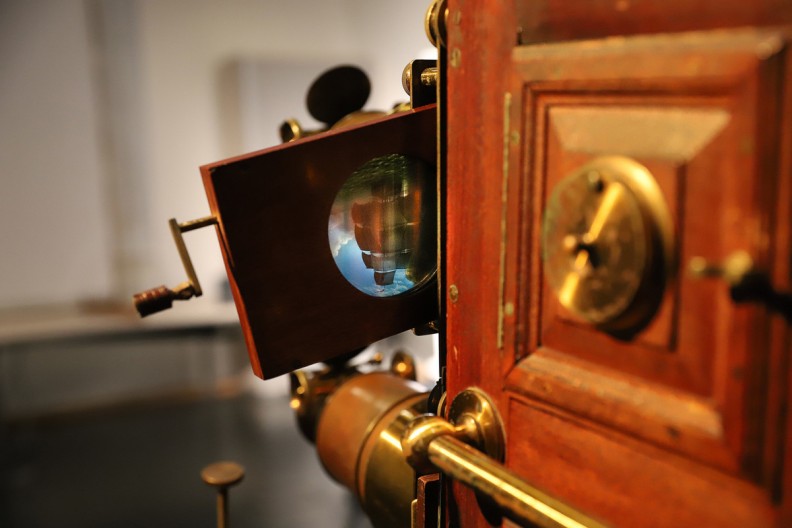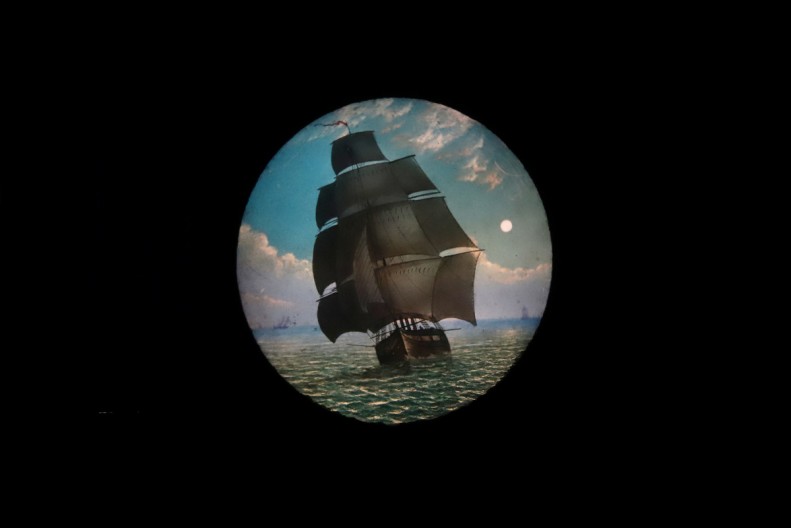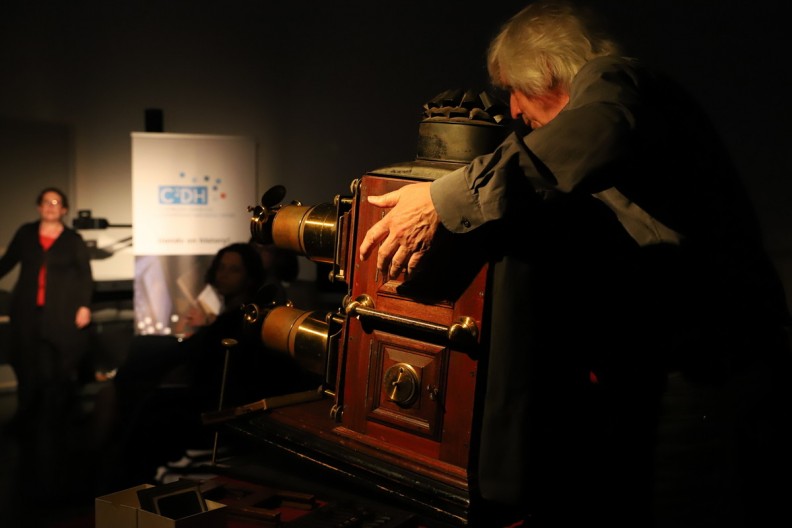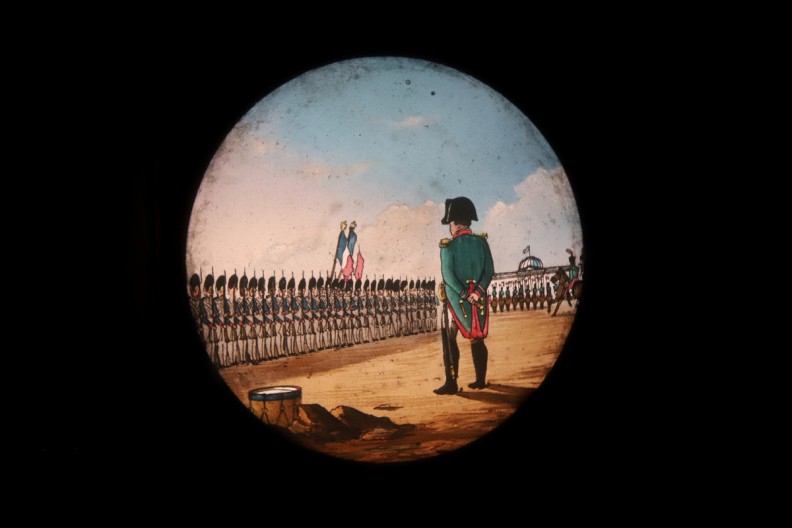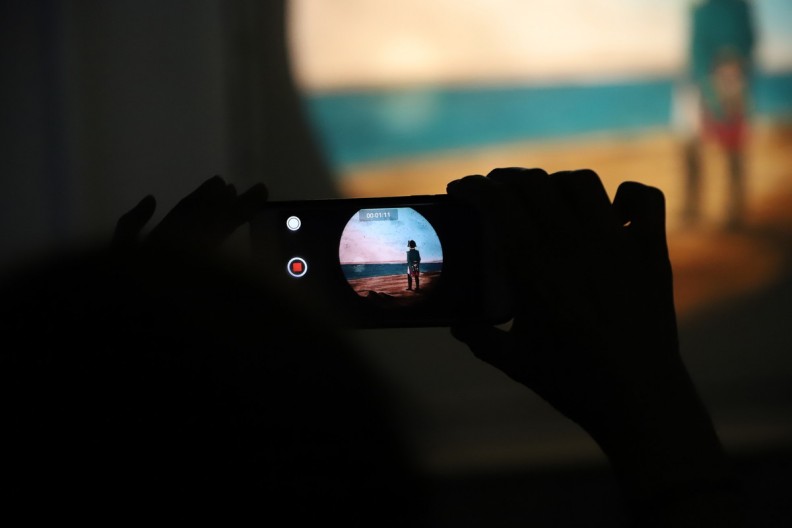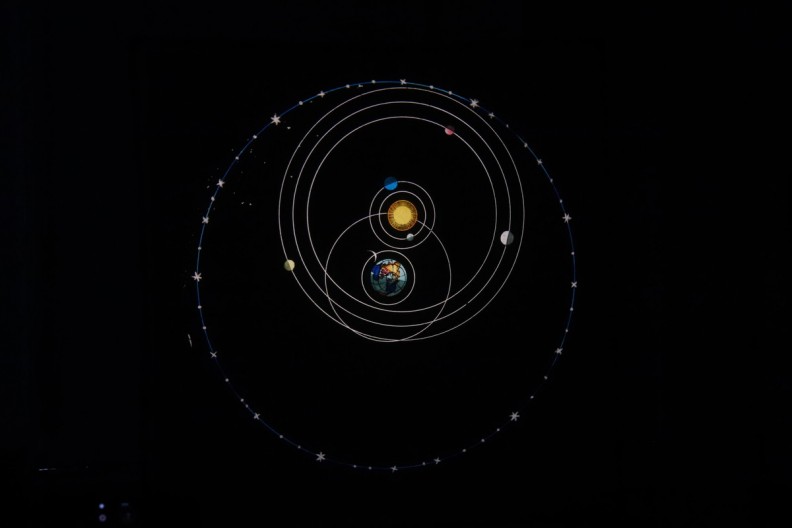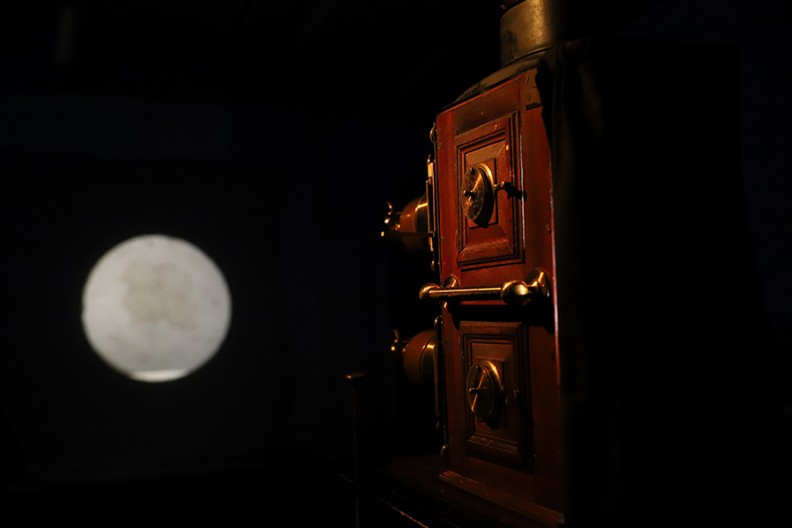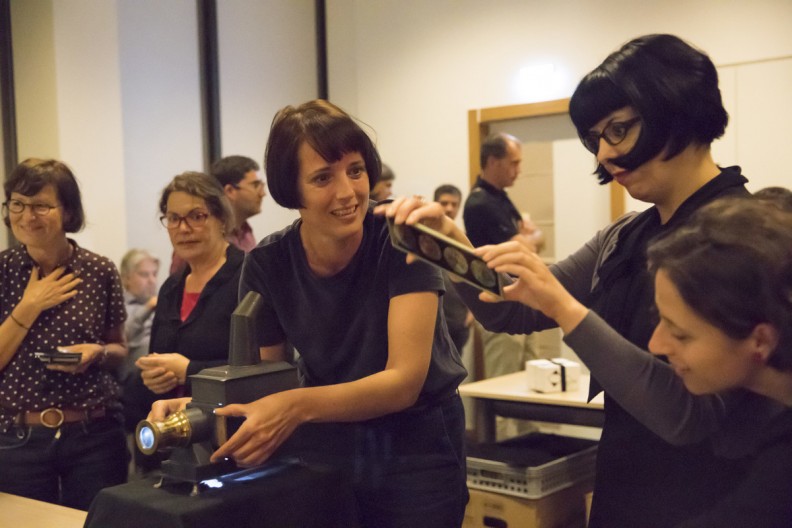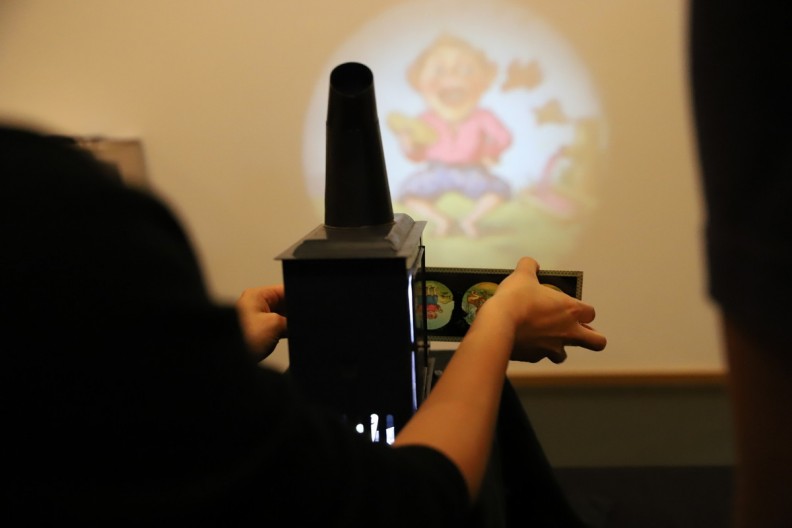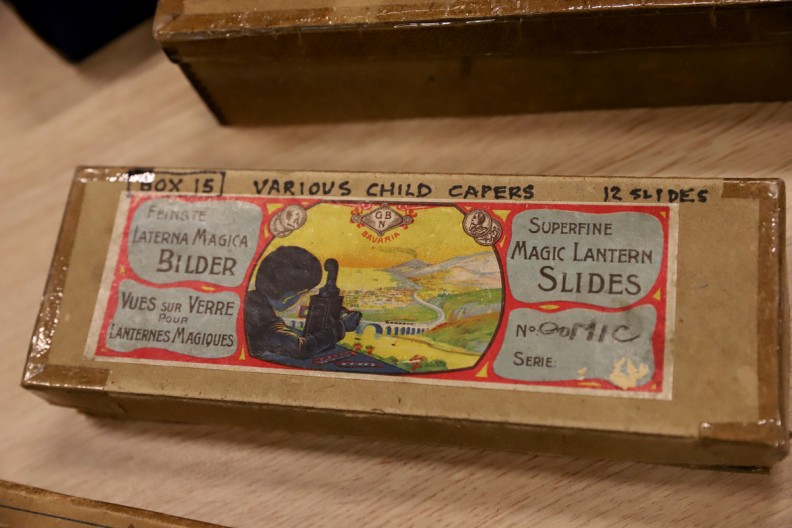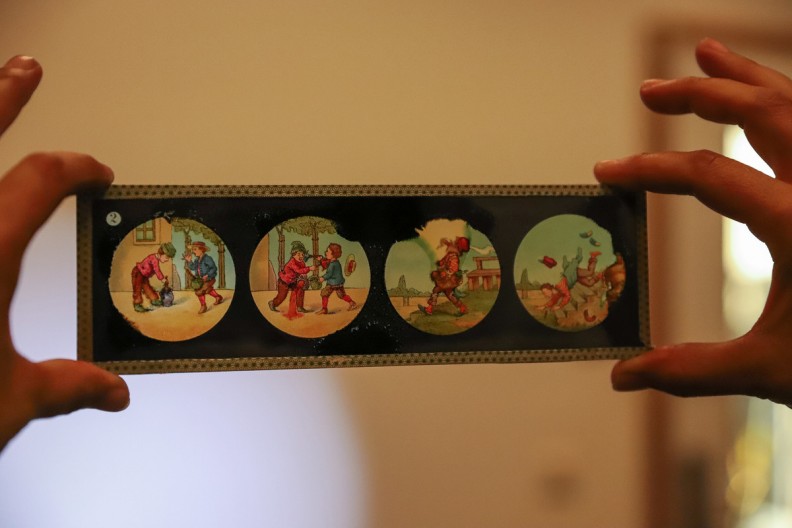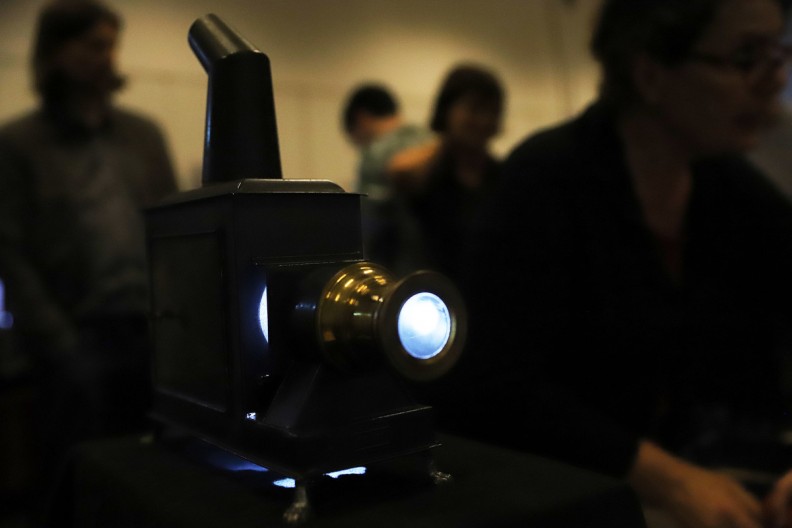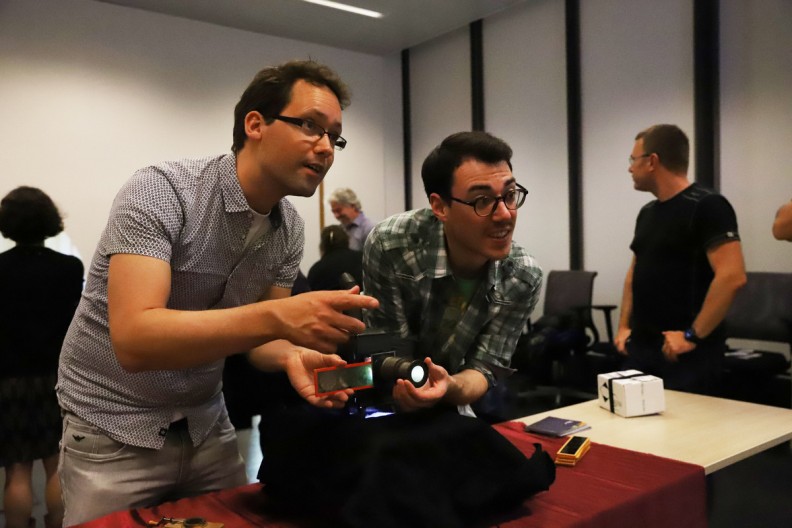The Hands-on History seminar started with an interesting and vivid presentation by Prof. Dr. Ludwig M. Vogl-Bienek. The magic lanterns or Laterna Magica projected images from glass plates onto a larger screen in the 19th century. In this material heritage project, the few surviving lanterns serve as the main source material. Most of the magic lanterns and accompanying glass plates and music or text booklets are now stored in private collections and therefore not always accessible to a larger public.
The Laterna Magica was often used in public performance events, such as this yearly performance in Fulham in 1889 for around one thousand poor children. The magic lantern was often used for instruction and education as well as entertainment. During a performance there was a screen on the stage, as well as one or more performers who would tell the story, sometimes play a musical instrument or dance. In the corner you can see the person who operated the machine with highly dangerous gases to fuel the lime light behind the magic lantern and changed the glass images. In smaller settings a movable lantern was used to create the illusion of a ghost in the late 18th century.
In an effort to bundle the archive material and provide critical editions with a description and analysis of the actual images, prof. dr. Ludwig M. Vogl-Bienek has created the E-Laterna website in collaboration with the Digital Humanities lab at the University of Trier (more information can be found here). The virtual research environment will be launched on the 4th of June in Trier and offers interested scholars "access to documents, artefacts, and lores, and a continuously present reconstruction of the sequence of images in coordination with music, text, and song".
After the lecture by Ludwig M. Vogl-Bienek we got the opportunity to see the Lanterna Magica in action in our Digital History Lab. In a live performance accompanied by some music and storytelling by Karin Bienek we saw different types of slides with both entertaining and educational content on an original 19th century Lanterna Magica. The only small difference was that it was not operated anymore with the use of lime light1 but with the help of electrical lamps. Here we can ask the question in how far this resembles its original use and how it was perceived — although future research will also explore ‘original’ projection processes.
- 1. By directing an oxyhydrogen flame to quicklime a chemical process took place and created a bright light source.
In the end there were some 19th century smaller magical lanterns equipped with led light which could be used by the participants. Some of the glass plates were especially made for children telling different stories, as well as educational images such as representations of different people around the world. The hands-on workshop showed us how the glass plates needed to be inserted and how the projector lens often needed to be repositioned to create clear images on the wall. Furthermore you needed a steady hand so that the images did not move too much during the projection. This magical lanterns session proved to be an interesting introduction into a field that is not yet explored in detail, but can result in interesting projects about material culture and how historians use and research these objects.



